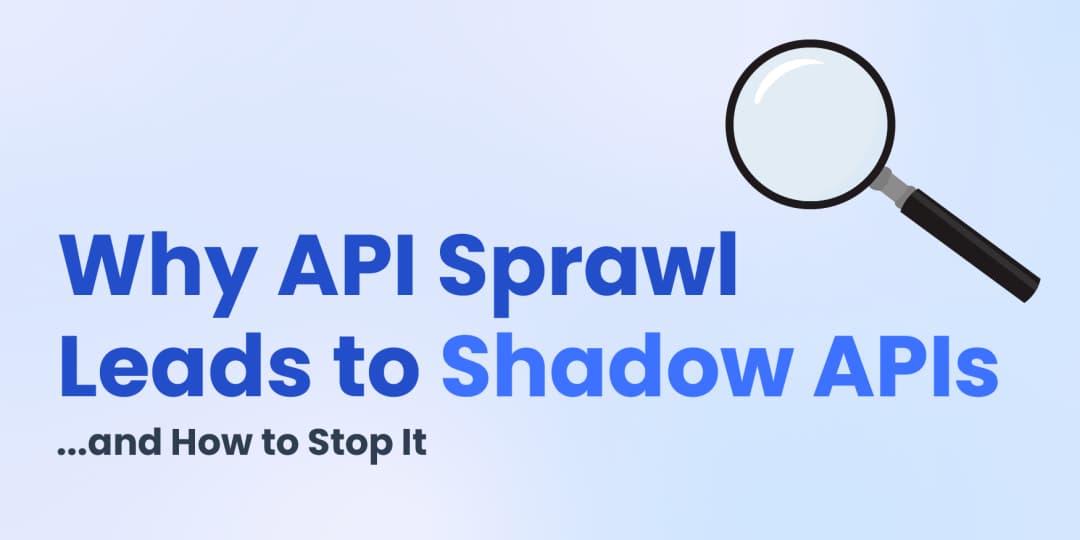API Design | Sep 11, 2024 | 10 min read | By Savan Kharod | Reviewed by David Blažević

Savan Kharod works on demand generation and content at Treblle, where he focuses on SEO, content strategy, and developer-focused marketing. With a background in engineering and a passion for digital marketing, he combines technical understanding with skills in paid advertising, email marketing, and CRM workflows to drive audience growth and engagement. He actively participates in industry webinars and community sessions to stay current with marketing trends and best practices.
APIs, or application programming interfaces, have been around for nearly 20 years and have evolved from being the hidden bridge that connects multiple software programs to the building blocks of the modern software development process as developers and businesses started to follow the API first approach.
In this article, I will answer some of the most asked questions, such as: what exactly is API's first approach? Why should you consider adopting this approach, what challenges you might face, and how to tackle them.
So, let’s get started.
Need real-time insight into how your APIs are used and performing?
Treblle helps you monitor, debug, and optimize every API request.
Explore Treblle
Need real-time insight into how your APIs are used and performing?
Treblle helps you monitor, debug, and optimize every API request.
Explore Treblle
API first, or API first approach, is all about prioritizing APIs at the beginning of the software development process, a.k.a positioning APIs as the building blocks of software. API-first organizations develop APIs before writing any other code instead of treating them as afterthoughts. This approach lets teams construct applications with internal and external services delivered through APIs.
To understand how the API first approach works, you need to have a forward-thinking mindset, recognize the role of public, private, and open APIs in your organization, and understand the API lifecycle and toolings.
We will get into each of these later in the article, but to answer your ‘how,’ here’s a simplified step-by-step approach you can follow:
As mentioned above, API first is all about prioritizing APIs as the most important element of the software development process. API-first organizations develop APIs before writing any other code instead of treating them as afterthoughts.
API design-first means describing every API design in an iterative way that both humans and computers can understand, even before writing any code. With an API design-first approach, every team uses the same tool, speaks the same language, and uses the same predefined nomenclature.
Here’s a side-by-side comparison of both approaches to give you a better understanding:

API-first vs. API Design comparison table
Both API-first and API design-first approaches get stakeholders involved in the early design process, even before writing any code, which provides several advantages over the conventional code-first approach, such as:
Need real-time insight into how your APIs are used and performing?
Treblle helps you monitor, debug, and optimize every API request.
Explore Treblle
Need real-time insight into how your APIs are used and performing?
Treblle helps you monitor, debug, and optimize every API request.
Explore Treblle
API-first approach provides clear, well-documented interfaces for developers to work with. This makes it easier for them to understand how different parts of the system interact, reducing confusion and improving productivity.
With defined APIs, frontend and backend teams can work simultaneously without waiting for each other. Frontend developers can use mock APIs while backend teams develop the actual functionality, speeding up the overall development process.
By focusing on API design upfront, teams are forced to think through the system's architecture and functionality more thoroughly. This often leads to better-designed, more robust software with fewer integration issues.
Once established, APIs can be reused across multiple projects or platforms. This reusability reduces redundant work and lowers development costs for future projects.
APIs provide a layer of abstraction between different parts of a system. This allows teams to choose or change technologies on either side of the API without affecting the other as long as the API contract is maintained.
The combination of parallel development, improved quality, and reusability often results in faster development cycles. This allows companies to launch products or features more quickly, gaining a competitive advantage.
Well-designed APIs make it easier to integrate with third-party services and other systems. This improves the overall ecosystem of your software and can lead to more robust, feature-rich applications.
Transitioning to an API-first mindset is not just a change in strategy but a shift in how development teams operate. Instead of jumping straight into coding, teams must start by designing and agreeing on API contracts upfront. This demands a collaborative approach, where frontend and backend teams work closely together from the beginning. It's about individual teams and the entire development community coming together to build better software.
APIs often expose data and functionalities that must adhere to regulatory and governance standards (GDPR, HIPAA, etc.). Ensuring that APIs are compliant adds an extra layer of complexity. Developers need to stay informed about the relevant regulations and design APIs that meet these requirements, which can be challenging when dealing with sensitive data or international markets.
Legacy systems can be a significant obstacle in an API-first approach. Many older systems weren't built with APIs in mind, making it difficult to create seamless integrations. Developers may face challenges like outdated technologies, lack of documentation, or incompatible data formats.
If your answer is ‘yes’ to all of these questions mentioned below, then you are an API First company:
If you failed to answer yes to any of these questions, read the following section to know more:
Here are a few initial steps you should take to become API first:
Ensure that everyone in your organization understands the importance of APIs and how they can drive business value. This involves prioritizing APIs as the starting point for all projects Instead of building features and adding APIs later, training, and workshops to get all teams on board with the API-first approach.
Develop standards and best practices for API design, development, and documentation. This might include conventions for naming, versioning, security protocols, and error handling.
Break down silos between teams and Involve API consumers (both internal and external) in the design process to ensure the APIs meet their needs and are user-friendly.
Adopt API management platforms like Treblle, Apigee, Postman, or Kong to manage your APIs effectively. These tools can help your teams with monitoring, versioning, security, and analytics. For a deeper dive into best practices for API governance, check out this guide on API governance.
Let's look at a simplified code example to illustrate how an API might work. We will take a basic API that allows users to create and retrieve to-do list items.
Here's a possible design for the API:
Endpoint: /api/todos
Methods:
Here's a Python code snippet demonstrating how a client application might interact with this API:
import requests
response = requests.get("http://your-api-url/api/todos")
todos = response.json()
for todo in todos:
print(f"- {todo['text']}")
new_todo = {"text": "Buy milk"}
response = requests.post("http://your-api-url/api/todos", json=new_todo)
if response.status_code == 201:
print("To-do item created successfully!")
else:
print(f"Error creating to-do item: {response.status_code}")This is a very basic example, but it demonstrates the core concept of an API. The client application (here, a simple Python script) makes requests to the API using HTTP methods (GET, POST) and parses the JSON response data.
Treblle is a powerful tool for teams adopting the API-first approach, offering features that simplify API management from design to deployment.
1. Real-Time Monitoring & Error Tracking: Treblle provides live insights into how your API is performing, including response times, request rates, and errors, helping teams quickly identify and resolve issues.
2. API Documentation: One of the key challenges in the API-first approach is maintaining up-to-date documentation. Treblle automatically generates documentation based on your API design, ensuring that it’s always aligned with the latest version. This makes onboarding new developers faster and ensures consistency across teams.
3. Collaboration Tools: With Treblle, both backend and frontend teams can work in parallel. Its API testing tools allow developers to mock API requests and responses, facilitating a smooth development process without waiting for complete backend implementation. This promotes parallel development, which is central to API-first methodologies.
4. Security and Compliance: APIs often deal with sensitive data, and Treblle helps ensure that your APIs comply with regulatory standards (such as GDPR) by offering insights into potential vulnerabilities and security gaps in your API traffic.
5. Version Control and Analytics: Managing changes to an API is critical in an API-first environment. Treblle supports version control, allowing teams to manage updates without disrupting users. Its analytics feature also provides usage metrics, helping teams optimize their APIs based on real-world data.
6. Developer Experience: By providing a clear interface with comprehensive tools, Treblle enhances the developer experience, ensuring that APIs are easy to integrate, use, and maintain. Its user-friendly dashboard simplifies the monitoring and debugging process, making it easier for developers to focus on building and scaling.
Adopting the API first approach is the natural choice for organizations who want to make APIs the center of all their strategies.
There are several paths such as design-led, code-led, prototype-led, proxy-led, and collection-led that you can follow to become API first. Remember, implementing the API first approach has a large upfront cost, but also results in larger benefits – technical flexibility, Improved developer experience, system interoperability, and the ability to innovate and release products quickly.
If you’re an organization that has yet to use APIs in a tactical sense, then API-first is not the right approach for you. For organizations already adopting the design-led approach to APIs, you're on your path to becoming API-first!
Need real-time insight into how your APIs are used and performing?
Treblle helps you monitor, debug, and optimize every API request.
Explore Treblle
Need real-time insight into how your APIs are used and performing?
Treblle helps you monitor, debug, and optimize every API request.
Explore Treblle
 API Design
API DesignAPI authorization defines what an authenticated user or client can do inside your system. This guide explains authorization vs authentication, breaks down RBAC, ABAC, and OAuth scopes, and shows how to implement simple, reliable access control in REST APIs without cluttering your codebase.
 API Design
API DesignRate limiting sets hard caps on how many requests a client can make; throttling shapes how fast requests are processed. This guide defines both, shows when to use each, and covers best practices.
 API Design
API DesignUnmanaged API growth produces shadow endpoints you can’t secure or support. This guide explains how sprawl creates blind spots, the security and compliance risks, and a practical plan to stop it at the source.